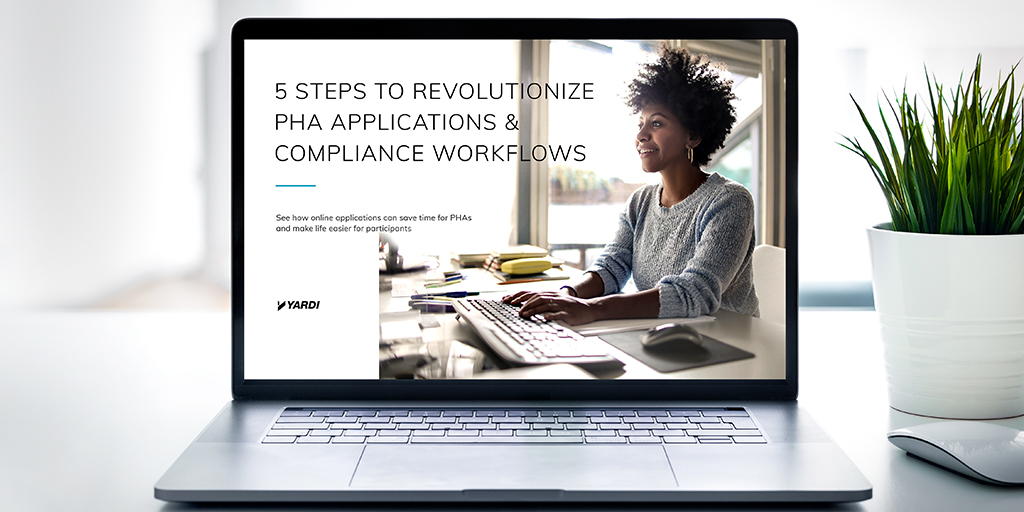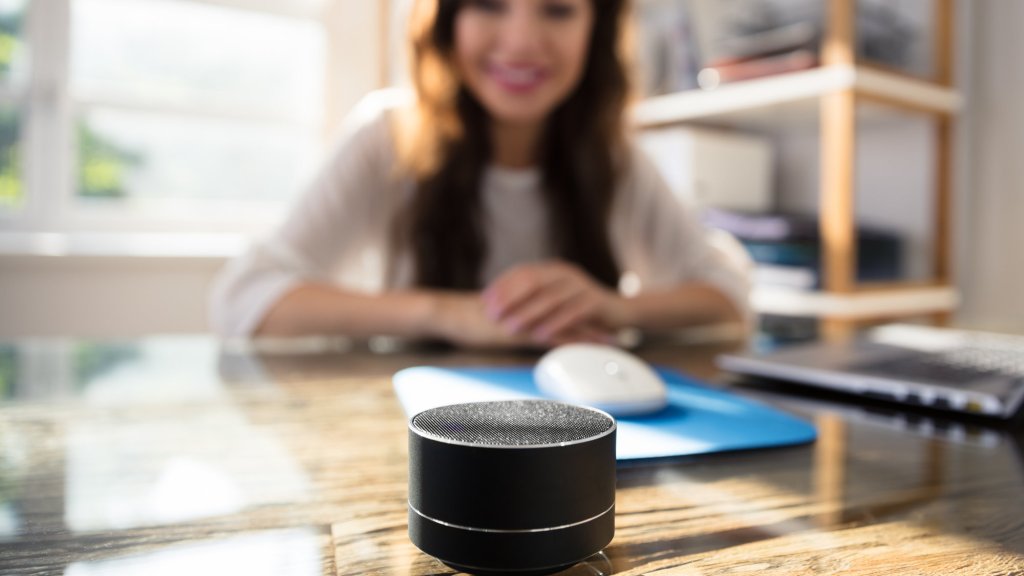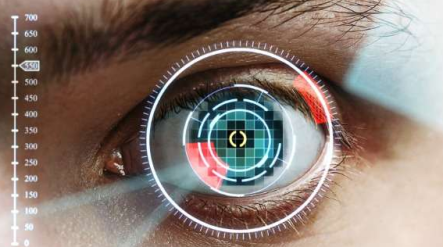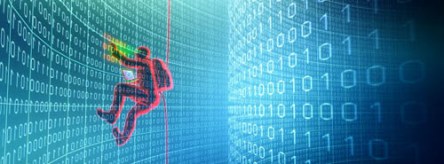The COVID-19 pandemic has prompted many changes in daily life, among them how we make routine purchases and conduct retail transactions. The desire for contactless point of sale is greater than ever. Hence the uptick in popularity for digital wallet transactions. Better known as e-wallets, this type of transaction lets you pay by tapping your phone or by scanning a QR code. The money will then be deducted directly from your bank account or from an e-wallet’s balance. According to Visa, in the U.S. contactless transactions for grocery and pharmacy have grown more than 100 percent year-over-year with 31 million Americans using a Visa contactless card or digital wallet in March 2020. Overall contactless usage in U.S. was up 150 percent since March 2019. Most Popular Mobile Apps The rise of mobile payment begun in 2014 when Apple Pay hit the market, being the only major mobile wallet on the market. Since then, mobile wallets have flooded the market with many companies introducing digital payment including Venmo, Samsung Pay, Chase Pay, Android Pay, Microsoft Wallet, Walmart Pay and Square Wallet among others. Many apps are default choices depending on which phone you have and the features are much the same on each app meaning that you can download the app for free, upload your credit or debit card and tap to pay with your phone at retailers that accept the service. Regarding to security reasons, companies ensure customers that mobile payments are a more secure method than using a physical card for many reasons. First, merchants won’t see your name, credit card number or the authorization code from the back of the card and second, mobile wallets are protected by a lock screen, requiring a PIN number or fingerprint authentication to use. There are...
Rent Deferral Technology
Help Residents & Recover Rents
With most states issuing stay-at-home orders and more than 10 million Americans filing for unemployment in March, many residential property managers are finding themselves in a challenging position during the COVID-19 pandemic. More than ever, their renters need to stay in their apartments, but they may not be able to afford rent. How can property managers help residents who have been financially impacted by the global coronavirus health crisis — without jeopardizing their operations? With input from its clients, Yardi came up with a solution. Introducing new rent deferral & recovery tech One way to provide resident assistance during tough economic times is rent deferment. Rent deferment is the practice of partially or completely postponing payments for a period of time. The deferred amount is recovered later, when the situation improves. Faced with an urgent and overwhelming need for technology capable of handling deferrals on a large scale, the Yardi development team sprang into action and created a solution for its clients in under two weeks. “With the number of unemployment claims skyrocketing, our clients reached out to us for help accommodating residents who have been financially impacted by COVID-19,” said Tamara Berndt, vice president of residential consulting practices at Yardi. “So we created software that’s able to manage and track resident requests, deferrals and recovered payments.” This new technology will be rolled out to clients before May rents are due. How it works At a resident’s request, a rent deferral and recovery payment plan can be set up in Voyager or RENTCafé CRM. The property management company can record the reason for the deferral as well as the amount that is being deferred and for how long, then set a recovery period start date and duration. The program will automatically spread the total deferred amount over the recovery period. Once the rent deferral agreement is signed and posted, lease charges will be automatically created each month with the deferred amounts and recovery charges as appropriate. Gross potential rent is not impacted, and all records are maintained in a clear and organized fashion. Documents related to the deferral, including proof of furlough or layoff and the repayment plan agreement, are stored in the resident record. If a property uses the RENTCafé resident portal, the process is easy for residents seeking accommodation. They can log in and upload proof of layoff or furlough documents. Once a payment plan is authorized, a signature document is delivered through the portal. All leaseholders can electronically sign and submit the agreement. Everything is done online or in the RENTCafé Resident app to maintain social distancing. The property management company also has an option to post an announcement of its rent deferment program in the portal. Clients who don’t use RENTCafé are still able to complete this process completely online, but residents will have to submit supporting documents and signed agreements via email instead. Who can use it The new rent deferral and recovery payment plan technology is available to residential clients, including multifamily, single family, affordable and military properties. A rent deferral solution for commercial property management clients will also be available in the near future. Deferment tracking The solution currently has two reports available to help track deferred rents and recovered payments. A listing report shows which residents are on a payment plan, and a repayment report displays recovery payment progress. Additional reports will be added in future releases. Learn more Join a rent deferral webinar, log into Client Central to watch the recording or contact...
Data-Driven Insights
Educational Online Content
Want to learn how to create digital content that engages professional learners? The first step is to understand the preferences and habits of adult learners. The 2019 BrightTALK Benchmarks report analyzes data on webinars, online courses, videos and other digital modalities to explore how professionals engage with content. How do professionals engage with content and when? More than 77% of those surveyed spend 2 or more hours per week on professional growth. Nearly 55% engage with webinars regularly, with 6% watching daily, more than 48% watching weekly, and more than 31% watching webinars monthly. Though 91% of respondents opt for webinars, other educational formats performed well. About 68% got information from short videos, 60% from articles, and 54% online courses. The ability to view content on demand was the highest ranked format feature, followed by the ability to watch a recording later. Professionals preferred to engage with live content hosted at 8am in Europe and North America. Though mornings were also popular in the APAC region, afternoons performed equally as well. Weekday events performed consistently well worldwide. Viewers in North America favored Tuesday and Thursday slightly more than other weekdays. Understanding the most favorable times to host live events helps growing organizations successfully schedule content. Discover how Roscoe Properties uses eLearning to onboard new employees during periods of rapid growth. What do professionals value in content? Professionals access digital content for a variety of reasons, but four categories attracted the broadest range of participants. About 80% of respondents accessed online content to acquire a new body of knowledge or skills followed by 78% who desired to improve their quality of the work. Tips, tricks, and best practices caught the interest of 70% of respondents and industry trends and predictions interested 62% of them. When...
Talking Technology
With Bernie Devine of Yardi
Before smart buildings and smart cities can become a reality, the real estate sector must focus on smart processes – and that means automating property management services still tracked on paper. Technology has the potential to enhance transparency and trust between property owners, tenants and vendors, but many property companies are “still figuring out how to take a simple service request on a clipboard and track its progress,” says Bernie Devine, regional director of Asia Pacific for Yardi. Devine has worked at the intersection of property and technology for three decades, and for the last six years with Yardi. “When I first started in real estate, most people operated from spreadsheets or, worse, paper. Today, I’m still talking to clients who manage their workflows on pieces of paper and others who turn to the Yellow Pages for procurement,” he says. This isn’t just inefficient. “Without automated processes we don’t have data. And that’s the bottom line – because without data we can’t make informed decisions.” Yardi’s VendorCafe, for instance, centralises product and service vendor information into a single system of record, reducing paper, speeding up invoicing, automating the onboarding process for vendors and, ultimately, cutting costs. “An automated system means tenants can report a problem in a few clicks, have the request reviewed and resources allocated from a list of pre-qualified vendors,” Devine explains. “Our system addresses the entire lifecycle of procurement, from vendor selection and onboarding through to compliance and tracking warrantees. You don’t need an army of procurement people – you just need a portal that is easy for everyone to use. “The customer knows what’s going on each step of the way, and that gives them comfort, even when there are delays.” Vendors gain real-time visibility of purchase orders and work orders...
Smart SMS Marketing
Texting Senior Living Prospects
You know how the stereotype goes. “Older people don’t use technology.” “Smartphones are too complicated for seniors.” “A flyer or a phone call is the only option.” Reality, as it turns out, begs to differ. According to an AARP survey, over 90 percent of older adults use technology to stay connected. And among those surveyed, text messaging has overtaken email as the method of choice for communication — 86% say they regularly text with friends and family. Clearly, today’s seniors are on board the technology bandwagon. The question now is, are your senior living sales counselors on board as well? SMS text messaging for senior living marketing is not new, but it’s quickly growing in prominence as more and more providers recognize its effectiveness. Text messages have open rates as high as 98%, while emails hover around 20%. If you’re not texting your prospective residents, you’re missing real opportunities to connect. But before you dive in and start sending texts left and right, take note. There are laws in place that regulate what’s allowed, and some property management businesses have already landed themselves in hot water. What’s the law on SMS text messaging for marketing? The Telephone Consumer Protection Act protects people from unwanted communications from any business. That means service providers must receive prior express written consent before cold calling or texting. And they can’t make agreeing to receive these marketing messages a condition for moving in or otherwise purchasing services. So how do you stay on the right side of the law? How do you ensure you’ve gotten permission from your senior living prospects to send them marketing texts? SMS text messaging in Yardi Senior CRM Yardi Senior CRM helps senior living providers manage their entire sales and marketing process — including...
Mobile Branding Matters
Your Brand in Renters’ Hands
Take a guess. How much time do you spend on your phone every day? Add up all those downward glances, text replies, phone calls and photo filters. If you’re like the average American, you spend 5.4 hours on your smartphone. And if you’re like me, that’s way more than you expected. Those numbers come from a recent study asked 2,000 smartphone users to check their phone settings and report their screen time. Not only did the study reveal just how attached we all are to our devices, but it showed that usage across generations is similar. Millennials spend only a little bit more time on smartphones (5.7 hours) than baby boomers do (5 hours). Over 50 times a day, we’re checking our phones. This year, Gartner anticipates that there will be over 20 billion connected devices. Just imagine how much more dependent we’ll be as these tools continue to pervade our homes and habits. Smart devices have led to incredible innovations, and they’re changing our lives like very few other communication technologies have before. By far one of the biggest differences is the way we interact with businesses. Why grab your car keys or dial a support line when the services you want are available at your fingertips in a mobile app? We now spend about 90% of our smartphone time in apps. Remember, that’s hours of every day. So for businesses looking to stay competitive, your mobile presence has to be top-notch. Of course, that goes for multifamily businesses too. You’ve spent so much time and money defining your brand strategy and designing your physical properties. Shouldn’t your mobile apps match? Put your brand in the palm of your residents’ hands Your residents are on mobile, so you should be too. Take advantage of this opportunity to connect with residents in the channels they prefer. “But wait,” you might say. “What about our company website? Doesn’t that work on mobile too? Why do we need an app?” Mobile websites are a valuable resource, but they can’t do everything a native mobile app can. Your mobile website is most often a shrunken version of the desktop website, accessible only from a browser and unable to offer a unique user experience or leverage phone capabilities like GPS, cameras or notifications. To top it off, consumers simply prefer mobile apps – by a large margin. One report suggests up to 85% of people prefer apps over mobile sites. Why? Convenience, speed and ease of browsing. It’s not just a matter of preference either. Apps have shown practical results as well. The conversion rate for apps is more than three times higher than on mobile websites. And if the app is poorly designed, 55% of people say it’d put them off using a company’s products or services, and nearly as many would be less likely to recommend the company to others. Clearly, your mobile app experience matters. It’s why we’re excited to introduce MyCafé by RENTCafé. The new white label mobile app for residents helps you promote your brand on the devices they use every day. Build awareness for your business and offer residents the convenience they expect in an app you own. You can brand the look and feel of the entire experience: Pick an app name that renters recognize Select colors to reflect your brand Feature images of your own properties Upload an icon that stands out Customize menu options to fit your needs MyCafé has the same powerful and popular features that are built into our standard RentCafe Resident app. Your renters can submit maintenance requests, make online payments, reserve amenities, interact with neighbors and more, all from their smartphone. And your property managers have the ability to offer lease renewals and electronic signatures on the go, with push notifications to let residents know when action is needed. If your property already uses RENTCafé Resident, you won’t have to...
Senior Tech at CES
Cutting-Edge Caregiving
Early January is a special time of the year for the technology-inclined. Tens of thousands flock to Las Vegas for four days to feast their eyes on the latest inventions and innovations at CES. There were over 4,500 exhibitors clamoring for attention this year. But hidden among them were a surprisingly large number of vendors who’ve turned their attention to one of the biggest changes of the coming decade – our aging population. The vast majority of seniors prefer to age in place, staying in their homes as long as possible. But just as many underestimate how much support they will need as they grow older. Currently, only one-third believe they will eventually need long-term care services, but the actual rate is near 70%. To add another misconception to the pile, many seniors believe that Medicare will cover them in these cases. But Medicare, as it exists now, provides for skilled medical care — think hospital stays and rehab. Though there have been some motions in the Medicare Advantage space to accommodate long-term services and supports, many of tomorrow’s seniors are likely to be underprepared for the costs of growing older. Which is why we’re thrilled that more and more technology developers are focusing on senior living and creating unique ways to help. Here are five of our favorites from CES 2020 for upcoming technology with the potential to change the way we age. A robot ball that recognizes falls If you’ve watched any of the new Stars Wars films, you can see where the inspiration for Samsung’s new creation might have come from. Called Ballie, this palm-sized rolling robot can follow its owner around the home, communicating with other smart devices, interacting with household pets and — most useful for caregivers — keeping...
In Renters’ Wallets...
5 Most Valued Smart Home Devices
We’ve all heard that renters are interested in smart home devices. How much are they willing to pay for them, though? We dive into the 2020 National Multifamily Housing Council (NMHC) & Kingsley Apartment Resident Preferences Survey to find out. What renters value is determined by how much they are willing to pay. The Resident Preferences Survey set out to put a monthly price on smart home features that renters crave. Nearly 373,000 renters living in 5,336 communities across the U.S. submitted their opinions on desired gadgets and pricing. The 2020 report is the largest compilation of apartment resident insights to date. Let’s take a look at which smart home features are most valuable to renters. Most Valued Smart Home Features All valuable smart home gadgets are connected to the internet of things (IoT). It takes more than internet connection for renters to value a gadget. The survey reveals that the most valuable smart home features are those that offer a combination of benefits in a single gadget. One of the most valuable smart home features makes the unit more comfortable, functional, and healthy. Survey respondents are willing to pay $36 for smart or dynamic glass. The technology helps to moderate indoor temperatures. It also reduces glare on display surfaces like televisions and tablets. Additionally, the dynamic glass promotes better health by blocking harmful light rays from the sun. Smart locks are the second most valuable. This product also multitasks: it offers the convenience of keyless entry as well as a layer of security. Most smartphones are protected with face recognition, fingerprint scanners, or PINs. An authorized user must be present to unlock the phone and then use an app on the smartphone to manage the lock to the unit. Renters are willing to...
How PHAs Simplify and Save
Changing workflows for the better
Public housing agencies are among the busiest organizations in the residential property management industry. There’s a lot going on. Most PHAs have thousands of names on their waiting lists. As names come up for consideration, staff faces hours of detailed work to ensure that that applicants qualify for housing assistance. Once applicants become residents, PHAs and the private landlords participating in their programs are responsible for all the normal property management duties associated with multifamily housing. To top it all off, PHAs are required to continuously report to the U.S. Department of Housing and Urban Development, as well as other state and local government offices, for compliance purposes. Luckily, there’s an app for PHAs that streamlines each of these workflows. RentCafe PHA is a unique solution available only to Yardi clients. By modernizing the way PHAs work with stakeholders, most every stakeholder group benefits. Here’s how. Prospects: RentCafe PHA simplifies how an agency can open its waiting list for new names. The typical frenzy of activity that happens when an agency accepts new names is mitigated since people can join a waiting list online, and without having to turn in a stack of paperwork. RentCafe PHA even offers automated solutions for agencies to periodically purge their waiting list without the need to mail thousands of notices and enter data returned in the mail. Instead, waitlisted households receive an electronic notice that it’s time to confirm their waiting list status. They can simply go online to quickly save their spot on the waiting list or opt out of consideration for assistance. Applicants: Nearly 800 housing applications were created in RentCafe PHA every day in 2019. And contrary to traditional methods of applying for housing, applications in RentCafe PHA are paperless. That’s nearly 300,000 stacks of paper potentially saved in 2019 alone. Another break from tradition is that applicants can work on their submissions when it fits their schedule. There’s no need to set an appointment during PHA office hours. In 2019, 42% of applications were completed after 5 p.m. and before 8 a.m. The convenience of 24/7 access from any connected device saves applicants from visiting the PHA during office hours, a bonus for both applicants and PHA staff. Landlords: Most any rental unit in town can be part of a public housing agency program if the landlord accepts PHA vouchers to supplement rent paid by the resident. Private landlords who decide to participate require access to forms to report back to the PHA on activities such as rent collected, maintenance work completed, move-outs, etc. With RentCafe PHA, landlords can do this work from their private computers or handheld devices. There’s no need to mail or fax paperwork to the agency, which saves a lot of time and money. Residents: Modern multifamily housing providers offer residents the ability to go online to pay rent, make repair requests, schedule inspections and more. PHAs are no different. Households that qualify for housing with RentCafe PHA continue to use the solution once they move into a unit. It’s simply a matter of adding resident functions to their already existing RentCafe PHA profile. Compliance staff: Every resident and participant in a PHA housing program must qualify for assistance. There’s a lot of work involved, and a lot of personal data that must be collected, submitted and verified. RentCafe PHA makes compliance easier and faster by connecting PHA staff with applicants and residents. Households can securely submit their data online, as well as images of backup documentation, directly to PHA compliance workers. Insecure and inefficient methods such as photocopying legal documents and storing private personal information in file cabinets are taken out of the process. Staff can even use RentCafe PHA to securely communicate with applicant employers, schools and former landlords to verify the accuracy of submitted information. Learn more about RentCafe PHA by downloading Five Steps to Revolutionize PHA Applications & Compliance Workflows, a...
Rise of the Digital Assistant
The New Multifamily Standard
Google anticipates that there are more than 20 billion devices connected to the internet of things and the digital assistants that manage it. This increase in connectivity has a dramatic impact on how people interact with their living spaces. Forward-thinking multifamily firms are capitalizing on the new technology and getting ahead of the curve. Renters + Their Digital Roommates Digital assistants like Alexa have become endeared members of American households. They wake us up in the morning and get us started with a pot of coffee. They play our favorite songs while we’re getting dressed and tell us when it’s time to take the kids to school. They also tell us jokes when we’re bored. (Fun fact: Alexa told over 100 million jokes in 2018.) Always cheerful and increasingly helpful, digital assistants have rapidly grown in popularity. About 16 percent of Americans own a smart speaker, which is quite impressive considering that the technology is only four years old. As of January 2019, Amazon sold more than 100 million devices with Alexa onboard, including 28,000 smart home devices from 4,500 different brands. Alexa speaks seven languages and added new customized user experiences for residents of Australia, New Zealand, France, Italy, Spain and Mexico. She offers 70,000 skills to make daily life more convenient. CNET reports that owners are so satisfied with her performance that the number of households with multiple Echo devices doubled in 2018. Digital assistants and smart home technology are here to stay. The value that they can add to the resident experience makes them a worthy investment for multifamily properties. Optimize Rent Lift with Digital Assistants Renters are among the millions of people who use digital assistants daily. Demand drives the trend of integrating smart home technology into multifamily properties: the 2019 Multi-Res Tenant preference survey, sponsored by Yardi, showed 31 percent of renters prefer a home with automation amenities. Smart home technology is now a competitive differentiator that bolsters revenue and NOI. “Residents equate efficiency with quality,” said Masa Hoshino, product manager at Yardi. “Prospects and residents increasingly care about convenience and experience. Integrating smart home technology is a tool for sales and retention.” The RentCafe Resident Services Alexa Skill expands the value of digital assistants for renters. The program customizes the convenience of home automation to the multifamily lifestyle. After securely linking their account, renters can issue commands like, “Alexa, open RentCafe,” and complete tasks such as “Alexa, ask RentCafe to pay my rent.” Watch the RentCafe Resident Services Alexa Skill video to learn more. This service enhances how renters already use digital assistants. Thermostats, lights, locks and security monitors are just a few of the popular smart home features that residents already value. Residents can control these features via apps and voice commands. “The demand for smart apartments is increasing,” said Patrick Lawler, director of product development at Yardi. “This Alexa skill helps property management businesses stay competitive by offering convenient and intuitive resident service options. Renters can ask Alexa to handle important tasks for them, without having to sit down at the computer or place a phone call.” Read more about RentCafe Resident Services Skill for Alexa. The future is bright for smart home technology. Global News Wire reports that the global smart-home-as-a-service market is forecasted to bring in about US$ 10.9 B in revenue by the end of 2025. Renter adoption rates continue to climb, motivating many multifamily firms to offer digital assistants as move-in...
Connection vs. Safety...
Real Estate Challenges FCC
To remain competitive, real estate providers face pressure to provide high speed internet. This pressure is felt throughout all property classes, from subsidized to luxury housing and commercial properties. Yet the Federal Communication Commission (FCC) is pushing back against signal boosters that pose a threat to public safety. The story is currently unfolding. Here is what we know: What is DAS? Broadband signal boosters are proving to be a benefit for multi-tenant real estate owners and a danger to FCC operations. Distributed Antenna Systems (DAS) are one of the most common boosters. They are a network of separated antenna nodes connected to a single source that enhances wireless service within a geographic area or structure. DAS helps to provide high-speed internet in areas where infrastructure is unfavorable for any number of reasons. Such fixed wireless technology has relatively little capital expenditure for ownership. No street-level digging is required. But like its pricier fiber optics competition, it offers a wide range of broadband transmission capabilities. The challenges for real estate providers Real estate providers turn to DAS to improve internet accessibility and performance for renters and tenants. Renters demand high speed internet, and the demand shows no signs of slowing down. According to the National Multifamily Housing Council Resident Preference survey, 93% of renters rate reliable cellphone reception as a top interest. About 55% of respondents view high-speed internet as a necessity. Additionally, 74% of renters are interested in community Wi-Fi. In the multi-tenant commercial environment, broadband connectivity is among the top three features that tenants require, reports the Building Owners and Managers Association (BOMA) International and the Urban Land Institute. Broadband connectivity is standard in new construction, and more than 50 percent of existing construction is retrofitted in some way to accommodate the technology,...
Personal Digital Identity...
Biometrics for building access
In a world where online banking, social media, e-commerce and other online services are a constant part of daily life, a verified digital identity is an important validation of one’s official existence. In 2016, an estimated 1.5 billion people globally could not access routine banking services because of the inability to prove their identity with a valid birth certificate, passport, proof of residency or other commonly accepted means. Use of a digital identity is a way of authenticating the “real you” when utilizing digital connections like the internet. Access via biometrics With technology’s sprint into the future, various new ID schemes have been launched or initiated all over the world. Some include biometrics, mainly in the form of fingerprints. The newest form of biometric identification is face recognition. One such example is PopID, which offers a cloud-based platform that enables consumers to authenticate their identity by using facial recognition. PopID’s latest launch is a platform that can unlock workplace doors and enables employees to enter the building using only their face. The system can also provide building and facility managers with alerts about tailgaters following authorized users into a secure location without installing any additional equipment. Unlocking doors has moved from old-fashioned keys to magnetic key cards or mobile devices, and now face recognition looms as the next normal. Tech savvy building managers can replace key card readers with facial readers. If employees don’t want to use biometrics to authenticate, this program also accepts key cards and mobile devices to unlock the doors. Additionally, building managers can designate authorized employees and hours in which you can enter the property. Secure digital identification Digital driver’s licenses are a secure version of your official government ID in your smartphone. There is a new project known as...
Simplify Social Housing...
Voyager Social Housing + ONPHA
Social housing providers in Ontario strive to improve efficiencies and remain compliant while providing the best outcomes for residents and their communities. As non-profit organizations, achieving those goals on limited resources can be tough. But with innovative software, achieving success in social housing management is revolutionized. Yardi Voyager Social Housing leverages tried-and-true best practices to offer secure and powerful software with a single, integrated database. Intuitive workflows, convenient automation, and industry-specific tools make subsidized housing management simpler. Voyager Social Housing empowers providers to save time, save money, and thrive. Empower Staff for Success Staff efficiency is essential to success in social housing. Peter Altobelli, vice president and general manager of Yardi Canada explains, “Yardi understands the demands and changes within this industry. ONPHA serves more than 700 non-profit housing providers over 400,000 people in 163,000 homes within Ontario. It’s important work and they’re doing a great job, but turnover is high and resources are limited for providers.” To make the most of available resources, Voyager Social Housing facilitates optimal operation of Canada’s non-profit housing. In addition to robust accounting tools, Voyager Social Housing helps manage RGI (rent-geared-to-income) reviews, Rent Supplement programs and facilities management. The cloud-based software equips staff members with the fundamental tools needed to work confidently and efficiently in the office and offsite. With the integrated general ledger, staff avoids repetitive data entry and costly errors. Streamlined workflows make it easier to obtain consistency, reduce inaccuracies and coordinate efforts among team members. Staying compliant is also simplified with easy-to-follow workflows. With redundancy and discord minimized, staff is free to focus on more critical tasks. Simplifying Rent Voyager Social Housing offers features that simplify RGI reviews: Provincial requirements can be readily updated in Voyager, making it easier to calculate rents using the most...
Caregivers Cut Off
Ransomware Strikes Senior Living
As technology advances, crime keeps pace. Modern lawbreakers can now hold lives hostage from afar. It’s all because of type of malicious software called ransomware. These programs are designed to lock down computers and data until a monetary demand is paid. When these viruses first cropped up, they generally targeted users indiscriminately by casting a wide net of spam emails and infected links, waiting for an unsuspecting web surfer to bite. Your computer would freeze, or your data would disappear under encryption, and you’d be treated to a pop-up asking you to pay up. But cyber criminals have gotten more sophisticated with their methodology just as the technology itself has evolved. These hackers now increasingly target health care organizations for their vast wealth of confidential medical records, which can be sold on the dark web for up to $1,000 each. At the same time, the attackers can deny access to the health care organization’s systems, including their electronic health records and medical administration solutions. This can have huge consequences for caregiving. Since most health organizations now rely on tablet-based charts, staff are left without medical histories and care plans to ensure proper treatment, putting their patients’ lives at risk. Long-term care under attack Hospitals aren’t the only care facilities affected by ransomware. Criminals have begun targeting businesses who handle the IT service needs for smaller organizations in health care – including senior living providers. This way, hackers can infiltrate hundreds of client businesses from a single breach. It’s what recently happened to Virtual Care Provider Inc, based out of Milwaukee, Wisconsin. On November 17, a criminal group encrypted the data of their entire customer base: 110 skilled nursing and acute care providers in 45 states. Resident records were locked, internet access blocked and medication...
IoT in Student Housing
Smart Campuses
The Internet of Things (IoT) has achieved great popularity in the last decade as it increases the comfort and quality of life. A growing number of homes and commercial properties have smart systems controlled by smartphones and microcontrollers through wireless communication techniques. The trend applies to student housing too. A smart strategy can help universities and property managers improve facility management, lower operational costs and enhance student experiences. Millions of students will head to class this fall with tablets and smartphones in tow. All those students are expecting lightning fast Wi-Fi to get the job done on campus and in student housing. IoT is reshaping not only the way students learn, but the way they live. According to Securedge Networks, by 2020 more than $1 trillion will be spent on IoT devices for college campuses across the country. Many universities have implemented smart technology in dorms. For example, Saint Louis University and Arizona State University have installed Amazon Echo Dot devices to help students get information on campus activities. University of Chicago, New York University and University of California, Davis also partnered with Telkonet to help students control the thermostats via a mobile app. According to Telkonet, colleges and universities spend roughly $14 billion on energy expenditures every year. A lot of energy is potentially wasted. Dorm rooms are vacant approximately 70 percent on an average day. IoT as a Service on in Student Housing Most colleges are skeptical when it comes to investing in non-essential technology due to limited budgets. Partnerships can lower project costs. The latest innovation in student housing tech comes from a partnership between Balfour Beatty Campus Solutions and IOTAS (which stands for IoT-as-a-Service). The developer and operator of infrastructure projects for colleges and universities united with the premier smart apartment technology innovator to deliver an integrated smart home experience for students. The partnership targets energy savings, security improvement in residence halls, and marketing to tech-savvy prospects. A few states away, Aspire at Discovery Park offers students the possibility to fully operate and customize their living units via a mobile app. The units feature various smart features including smart lighting, thermostats, outlets, sensors and locks, as well as a full integration of Amazon Echo and Google Assistant. Located in the Discovery Park district of West Lafayette, Indiana, the community ranks as the region’s first property to include a fully-integrated smart home system installed during construction. The system operates in all 835 units. Currently found in multifamily communities across 40 U.S. markets, the IOTAS system connects residents’ and property managers’ authorized devices to smart home features such as: smart switches, outlets, door locks and thermostats door, humidity and motion sensors leak detection ceilings fans window coverings garage door control A Broader Reach with IoT Students use IoT devices to access homework assignments or to access classes remotely via video conferencing. On the other hand, alerts can be sent for those students skipping classes, which benefits school officials to help those who may be struggling academically. Colleges and universities are also trying to reduce traffic congestions, increase road safety—both for drivers and pedestrians—and lower carbon emissions by jumping into the autonomous vehicle cause. These days, the quality of a student housing community is determined by its tech offerings. Families consider Wi-Fi strength, coverage range, and other tech factors when making a decision on student...
Changes in the Clouds
CIO + CFO Role Shifts
Cloud services have changed the roles of executives. CIOs implement fewer on-premises applications. Their technical infrastructure needs have evolved within the Internet of Things. CFOs now mold their capital expenditures pitches to address operations. In the center of those changes floats the cloud, and with it, the continually evolving roles of executives. The Balance Sheet caught up with Shawn Cardner, executive VP, multifamily operations and IT, Grubb Properties, to discuss the evolution on leadership. “The real estate industry, which arguably was slower to adopt technology, now can’t escape its influence,” explains Cardner. “Almost all multi-family marketing is digital, and big data now plays a role in many firms’ daily decision-making and long-term asset strategies. Firms that wish to remain competitive must integrate the CIO role into their overarching business strategy in order to reduce costs and increase revenue.” Benefits of the cloud for CIOs and CFOs The cloud offers several benefits for CIOs and CFOs, specifically. Scalable Solutions Through the cloud, CIOs can capitalize on features and services for small and medium-sized companies that were previously available to large companies. “Being able to play in the same sandbox as the largest of our peers allows us to be competitive in spaces where we might not otherwise be able,” says Cardner. Faster Implementations Finance teams are not dependent upon IT for support. As a result, implementations are rolled out with less friction during office hours and more work can be accomplished, faster. Specialized Software Support When using Yardi Cloud Services and Yardi Voyager to manage the general ledger, for example, the IT team does not invest resources in maintaining the accounting software. Updates and security are managed off-site by Yardi. Finance owns the application but supports the business processes in a more specialized manner. Cardner adds, “It’s worth noting that different challenges exist. There are fewer technical skills required of my team with a full-service solution like Yardi. There are, however, more nuanced soft skills and relationship skills required of us, which are sometimes difficult to find within technology circles.” Shorter Queues for IT With Cloud-based applications, there is less demand for IT to manage hardware or software. This often results in lower on-premises infrastructure costs. CFOs and their departments experience improved time to value, greater autonomy, and maintain ownership of software without being hampered by implementation or management during office hours. CIOs and their teams reduce hardware and software support, may decrease total cost of ownership, and can focus on specialized tasks. Addressing the risks Conversations about the cloud inevitably include risk management, security, and compliance. CIOs, CFOs, and COOs must collaborate proactively mitigate risks. “There is a tendency to recoil from the cloud when news of breaches occurs because of the bad press and notoriety. I’m reminded, however, of an IT saying, ‘The cloud is just someone else’s computer.’ An open port on a firewall turns an entire network into an unwanted cloud service, so diligence and thoroughness are necessary, regardless,” explains Cardner. He continues, “Modern security technology is quite robust, whether on-premise or in the cloud. The weak link of security in today’s age is people. Malware, ransomware, phishing and much of all data theft and loss are a result of improper employee conduct or inadequate employee training. When vetting a new cloud provider, that’s where my focus lies.” The future of leadership The value of infrastructure continues to be an integral part of CIO responsibilities. Even with available outsourced and cloud-based solutions, CIO’s still need to consider infrastructure and its strategy fundamental to the job. Yet now more than ever before, CIOs are becoming strategists. The emphasis shifts to discerning which services an organization needs to thrive rather than focusing on infrastructure. “Traditionally, CIO’s were strictly service providers and, in many organizations, didn’t sit at the table where strategy decisions were made. However, the proliferation of digital technology across and within organizations now mandates a level...
Senior Living Leaders...
Get the Changemakers Ebook
New regulations. Rising acuity. Huge demographic shifts. There’s no doubt that senior living as an industry is changing. And it’s changing faster than many providers are ready for. But there are a few who are facing these challenges head on, ready to adapt with novel practices and new technologies. Earlier this year, Senior Housing News spoke with nine such leaders in senior living as part of a series they call the Changemakers, sponsored by Yardi. They published the interviews individually over the past few months (and we chronicled a few here on The Balance Sheet), but they’ve now compiled the highlights – along with the leaders’ accomplishments, tips and insights – in a complete ebook for your reading pleasure. Download the ebook to learn how these senior living innovators are pushing the industry forward. There’s a wealth of experience and learnings shared throughout the pages, so you don’t want to miss it. Not convinced? Here are a few great excerpts: “[Our] program has been studied by Vanderbilt University. What we’ve learned is that, one, residents who experience mild cognitive impairment can thrive within assisted living, and also that it’s possible, as I said, to change the trajectory of the disease process. That’s a mind-bending accomplishment, particularly for a disease process that still has no medicinal cure.” – Patricia Will, Co-Founder & CEO of Belmont Village Senior Living “We have people who have lived long lives, who have gained life experience and, hopefully, some wisdom. Now, there’s that opportunity not just to sit on the front porch in a rocking chair, but to become engaged with the world around you and to share that wisdom, to share that life experience out into the world, and to make a difference. To cement...
Make Staff Training Stick...
9 Tips to Assess Learning
One of the best ways to maximize a training budget is to avoid repeat instruction. When staff learns materials the first time, property managers avoid redundant training costs and quickly enjoy the benefits of properly trained staff. Did you know that assessments play a big part in making sure knowledge is properly absorbed? Assessments are most easily described as the quizzes and tests that pop up during a training session. They aren’t there just to make learners sweat a little bit before wrapping up a course. The real purpose of those tests (more specifically referred to as assessments) is to make sure learners have absorbed the material being taught. When properly written, an assessment can document that a student has gained some knowledge and strategically determine which concepts need to be reinforced before the course can be completed. Here are some tips to consider for your course assessments. Identify the true purpose of the assessment. Before writing test questions, ask yourself what exactly you want to measure with the assessment. Keep all questions focused on that goal. If you include anything else in an assessment, no matter how benign, you may wind up with extraneous, perhaps conflictive data that is not useful in measuring how well the course taught the material. Make sure questions ask about the core learning objectives. Including fun, obscure information during training can be a good way to make training interesting. Just be sure to leave those fun facts out of your post-class assessment. You want to know that learners are acquiring critical knowledge, not the extra stuff that a course may cover. It’s okay to have difficult questions, just don’t make them tricky. Assessments should make students think, but shouldn’t be at all devious or crafty. Trick questions are...
ENERGY STAR Day
Celebrate energy savings
Tuesday, Oct. 22, 2019, is ENERGY STAR Day, described by the U.S. Environmental Protection Agency as “a celebration of energy efficiency” and a means to raise awareness of the benefits of favoring products and properties with ENERGY STAR® certification. And there’s a lot to celebrate. On average, ENERGY STAR-certified buildings use 35% less energy than typical buildings nationwide and command a premium of up to 16% for sales prices and rental rates. More than 34,000 buildings have earned certification, which requires an ENERGY STAR score of 75 or higher, meaning that such a building performs better than at least 75% of similar buildings nationwide. All told, ENERGY STAR and its partners have helped save American families and businesses more than $450 billion and over 3.5 trillion kilowatt-hours of electricity since 1992 while also achieving broad emissions reductions. Another facet of the ENERGY STAR program has been similarly fruitful for industrial plants, while ENERGY STAR-certified homes, apartments and products are built to an equally high standard of efficiency. Yardi is intimately familiar with ENERGY STAR and its benefits. Property managers use the Yardi Pulse Suite to capture energy data for ENERGY STAR® benchmarking and reporting. The company employs experts who can help clients identify conservation opportunities and comply with ENERGY STAR and other standards. Yardi is also sponsoring a series of webinars this month on new ENERGY STAR compliance requirements taking effect in the U.S. and Canada next year. The EPA, co-manager of ENERGY STAR, has recognized Yardi as an energy efficiency leader. In April 2019, the company earned designation as an ENERGY STAR Partner of the Year, the highest level of recognition the agency offers, in the service and product provider category. Check out the EPA’s toolkit for spreading awareness of ENERGY STAR Day through...
Data IDs Ideal Renters...
Resident Screening, Canada
Identifying quality residents will keep your long-term costs low. Low occupancy rates in the current Canadian rental market allow property managers to focus on selecting the most desirable residents for their vacancies. It is important, however, to make quality selections quickly before those ideal prospects sign a lease elsewhere! Explore how technology can help you efficiently sign leases with the right residents. Know your applicants Basic credit checks aren’t enough to get to know prospective renters. Add a range of inquiries to screening process to give you deeper insights that help mitigate risk—without slowing down the process. “A more robust screening process doesn’t have to be time consuming. Online, automated applicant screening improves speed, data access, and accuracy. Your screening software should integrate with your property management platform for full transparency,” suggests Peter Altobelli, vice president and general manager of Yardi Canada. Screen confidently Regardless of income, prospective renters need to be held to the same screening standards. Equifax credit data, criminal and court records, fraud checks, employment and rental histories are all important sources of information to properly evaluate an applicant. “Consider adding Certn as well to your screening process as well. Certn is the world’s largest risk relevant database, uses data from thousands of publicly available records and incorporates artificial intelligence and machine learning to evaluate prospects,” Altobelli says. Certn data includes high-risk behaviors, criminal and court records from 240 countries, 350 Canadian court boards and tribunals, adverse media, eviction records, watch lists and social media profiles. Understand the benefits Advanced screening technology that analyzes a range of reliable data can help you consistently choose quality residents. When that technology integrates with your leasing and accounting platform, it brings additional benefits. “An integrated screening solution compares your screening process with the overall...




















